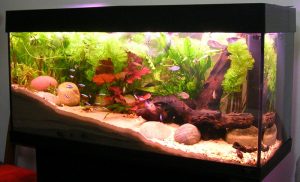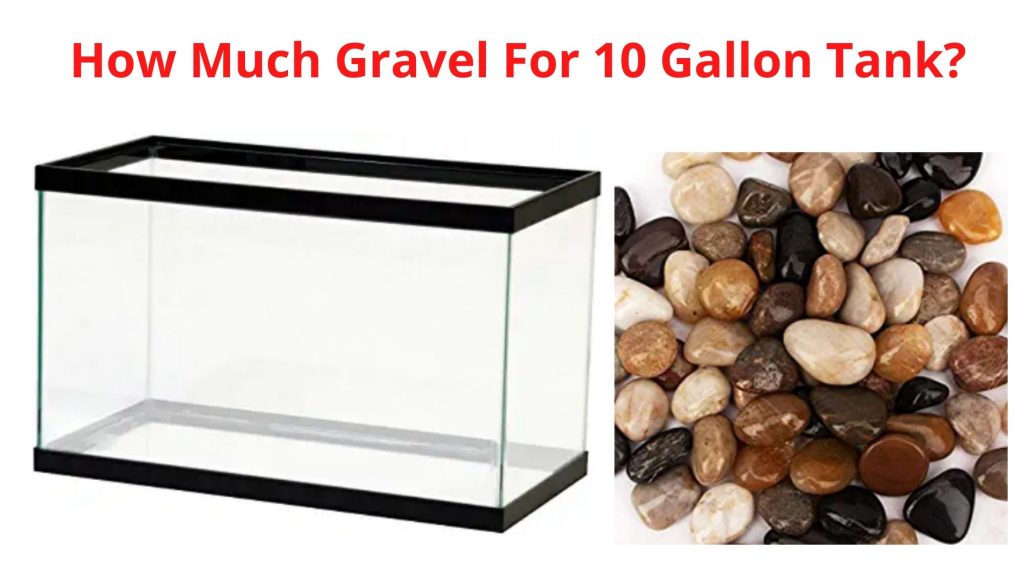How Much Gravel For A 10 Gallon Tank
If you're a beginner aquarist, one of your first questions could be about the amount of gravel needed for a 10-gallon tank. While it may seem like a simple answer, the amount of gravel you need depends on several factors. In this post, we'll be diving deep into the world of how much gravel for a 10 gallon tank and help you make an informed decision for your aquatic pets.
Discovering the Pain Points
Setting up an aquarium can be an exciting and creative process, but it can also bring up many doubts and confusion as well. One of the main pain points for new aquarists is how much gravel they should use in a 10-gallon tank. Choosing the right amount of gravel is crucial as it affects the drainage, nutrient levels, and overall health of the aquarium. The lack of knowledge and understanding can make the process overwhelming and can lead to poor tank health and unnecessary expenses.
Answering the Target - How Much Gravel for a 10 Gallon Tank?
The ideal amount of gravel for a 10-gallon tank is one pound per gallon, which means ten pounds of gravel for a ten-gallon tank. It is recommended to keep a substrate thickness of 2-3 inches, which means ten pounds should be enough to cover it. However, factors like the type of fish, plants, decoration, and filtration system can impact the amount of gravel you need.
Summarizing the Main Points
When setting up a 10-gallon tank, it is crucial to keep in mind the following factors - type of fish, plants, decoration, and filtration system. The ideal amount of gravel would be one pound per gallon or ten pounds of gravel for a ten-gallon tank with a substrate thickness of 2-3 inches. Following these steps will ensure a healthy environment for your aquatic pets.
Personal Experience - Choosing the Right Gravel Size
When I set up my first 10-gallon tank, I was confused about the type of gravel I should use. I did some research and found out that using a larger gravel size can be challenging as it makes it difficult for the fish to swim and can trap waste particles. So, I opted for a fine gravel size, which made it easier for me to maintain the tank and improve the overall aesthetics of the aquarium.
Choosing the Right Color for Your Tank
Choosing the color of the gravel is as essential as selecting the right size. Neutral colors like beige, brown, and black provide a natural look to the aquarium and complement different kinds of fish and plants. On the other hand, brightly colored gravel provides a vibrant and colorful look to the aquarium and can beautify the overall tank.
The Impact of Gravel on Filtration
The gravel in a tank plays an essential role in the proper functioning of the filtration system. Larger gravel can prevent the proper flow of water through the filter, leading to ineffective filtration. On the other hand, using fine gravel can clog the filter system. Hence, it is crucial to choose the right size of gravel not only for tank aesthetics but also for the efficient functioning of filtration.
The Recommended Type of Gravel for Freshwater Aquariums
For freshwater aquariums, it is advisable to use a gravel type that is inert and does not affect the pH of the water. While choosing gravel, make sure to avoid using limestone or coral-based gravels, as they can raise the pH levels and cause harm to fish and plants. The right type of gravel can improve aquaponics in a natural way.
My Personal Experience - The Art of Layering Gravel
When I set up my second 10-gallon tank, I experimented with layering the gravel to give it a more natural and appealing look. I added a layer of small gravel at the bottom and topped it off with a layer of larger gravel. Not only did it look beautiful, but it also provided a better environment for the tank's ecosystem. It helped anchor live plants, improved filtration, and created a natural aquascape.
Question and Answer
Q1. How often should you clean the gravel in a 10-gallon tank?
A1. It is recommended to clean the gravel in a 10-gallon tank once a month or when the tank appears dirty.
Q2. Can too much gravel harm the fish in a 10-gallon tank?
A2. Yes, using too much gravel in a 10-gallon tank can harm the fish as it can lead to anaerobic bacteria growth and poor water flow.
Q3. Can using colored or painted gravel harm the fish or aquarium?
A3. Yes, using colored or painted gravel can harm the fish and aquarium as the paint or dye can leach into the water and affect the water quality.
Q4. Can the type of substrate, including gravel, affect the growth of live plants in a 10-gallon tank?
A4. Yes, the type of substrate, including gravel, can affect the growth of live plants in a 10-gallon tank. Using soil or nutrient-rich substrate can help ensure healthy plant growth.
Conclusion
Understanding how much gravel for a 10-gallon tank is essential to ensure the proper functioning of the aquarium's ecosystem. By taking into account factors like fish, plants, decoration, and filtration systems, one can determine the ideal amount of gravel needed for a healthy aquarium. Choosing the right type, size, and color can enhance the aesthetics of the aquarium while also improving the aquatic pets' wellbeing.
Gallery
How Much Gravel For 10 Gallon Tanks? [Beginner's Guide]
![How Much Gravel For 10 Gallon Tanks? [Beginner's Guide]](https://aquariumtales.com/wp-content/uploads/2022/02/how-much-gravel-for-10-gallon-tank.jpg)
Photo Credit by: bing.com /
How Much Gravel For 10 Gallon Tank - SeaLife Planet

Photo Credit by: bing.com /
New 10 Gallon Upgrade For The Wife's Betta! : Aquariums

Photo Credit by: bing.com / gallon aquarium betta aquariums tank fish tanks upgrade wife comments beginner november hide
How Much Gravel For 10 Gallon Tank? These Factors Will Help You.

Photo Credit by: bing.com / gravel substrate
How Much Gravel For 10 Gallon Tank? These Factors Will Help You.

Photo Credit by: bing.com / factors
